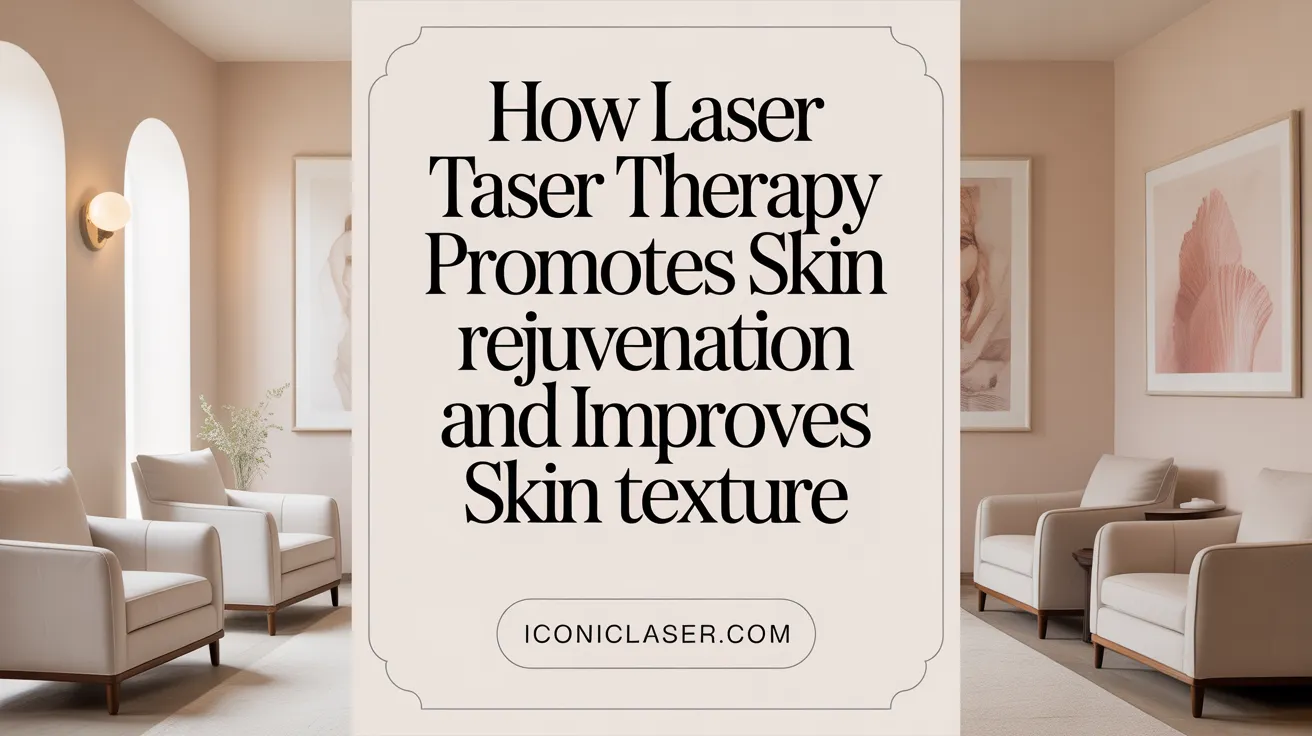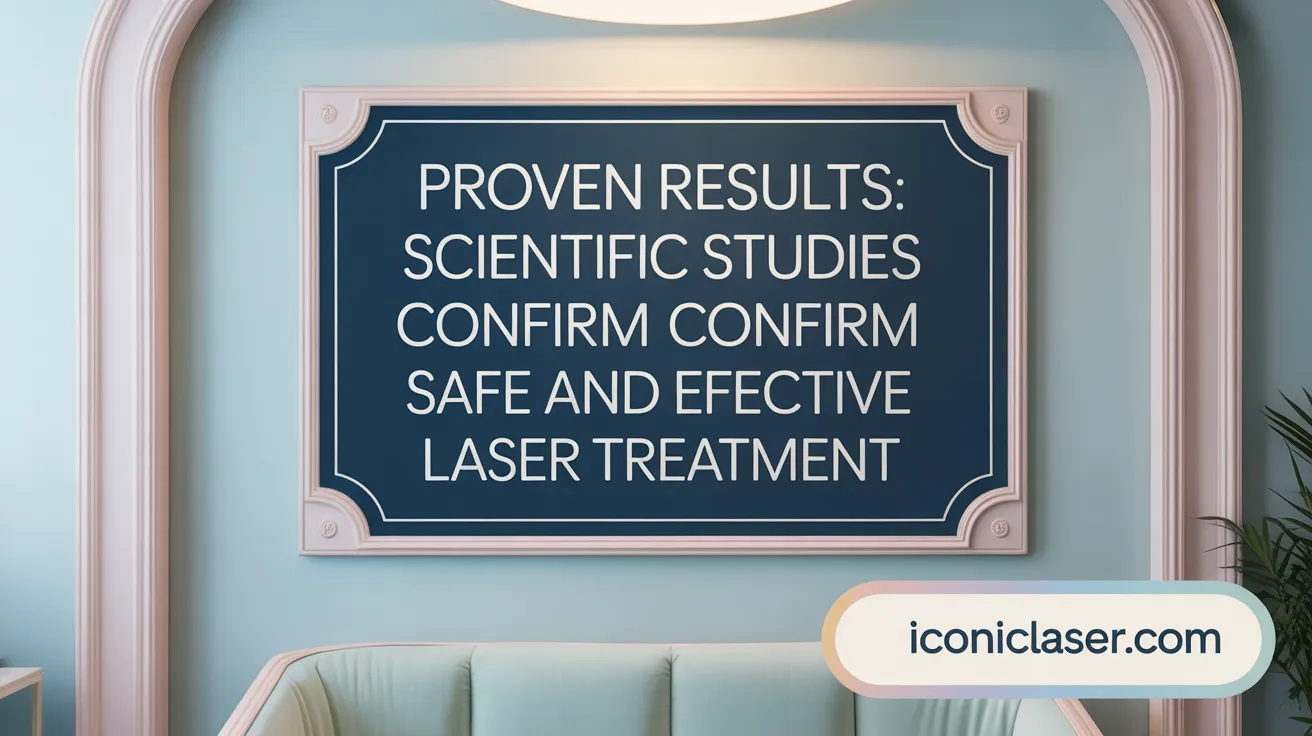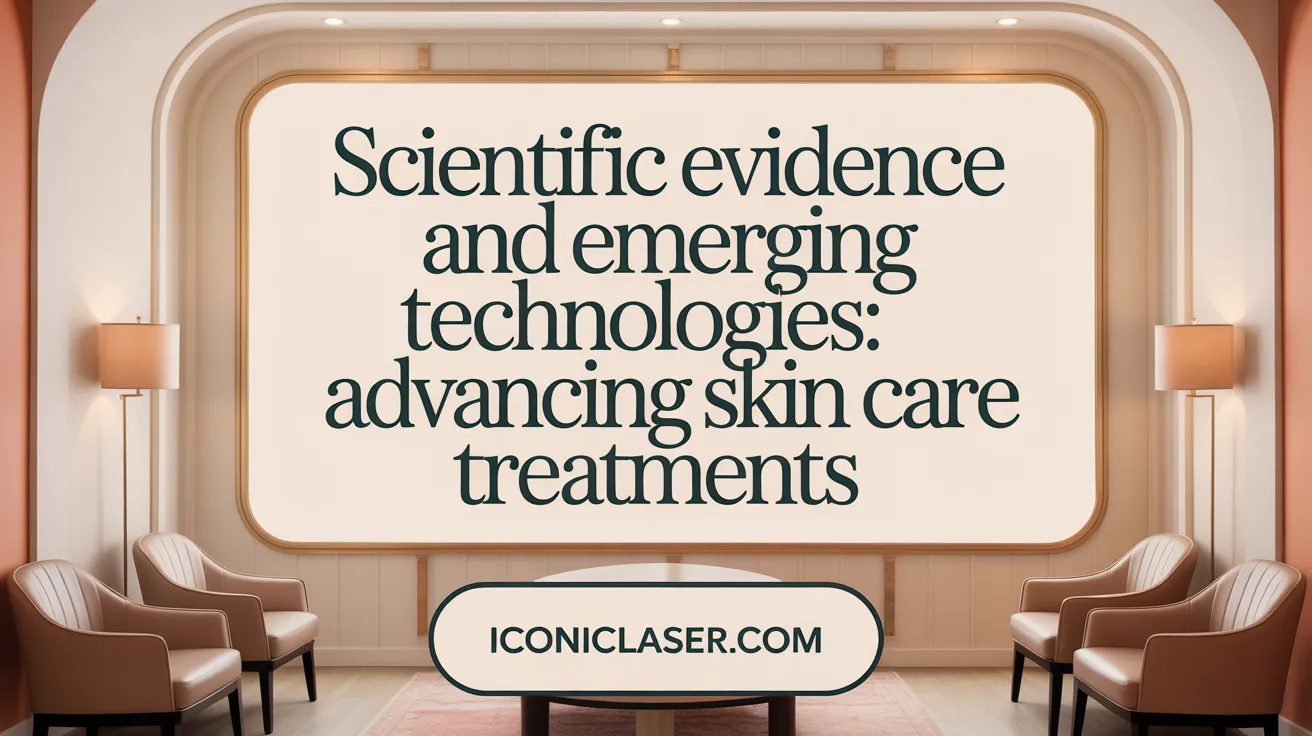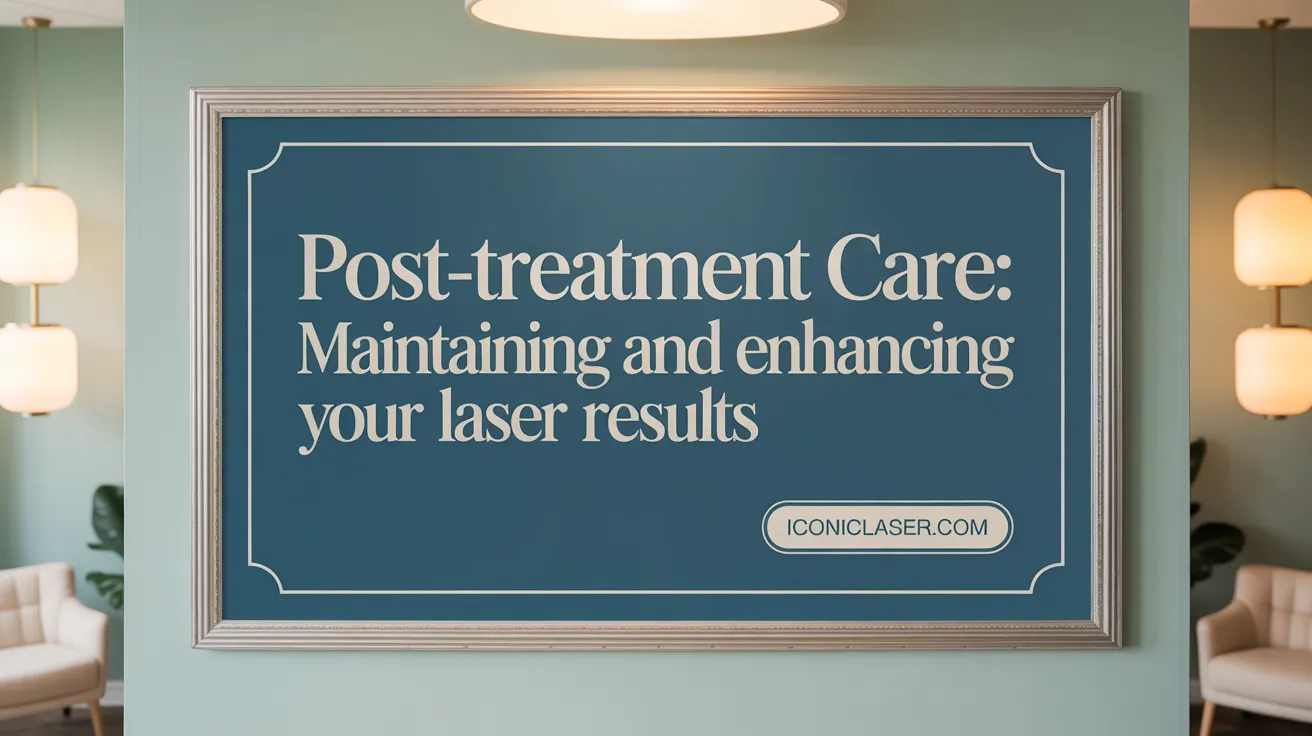Understanding Laser Therapy for Stretch Marks
Laser treatments have revolutionized the approach to reducing the appearance of stretch marks by harnessing advanced technology to stimulate skin regeneration. This article delves into the mechanisms, effectiveness, recovery, and safety of laser therapies, with a special focus on the growing market of at-home laser devices. By examining scientific studies and clinical data, readers will gain a comprehensive understanding of what to expect from laser stretch mark treatments, both in clinical settings and at home.
How Laser Treatments Work to Improve Stretch Marks

What is the general mechanism behind laser treatments for stretch marks?
Laser therapy for stretch marks functions primarily by stimulating the skin’s natural production of collagen and elastin fibers. These proteins are crucial for maintaining skin strength, elasticity, and smooth texture.
Different laser types are used to target various aspects of stretch marks. Vascular lasers, like pulsed dye lasers, are often employed in the early stages of stretch mark development because they target the blood vessels in red or pink striae. This reduces redness and promotes healing. For mature, white stretch marks, fractional and non-ablative lasers are preferred. These lasers create controlled micro-injuries in the skin, which trigger the body's healing response.
Laser energy heats the deeper skin layers, especially the dermis, encouraging the formation of new collagen and elastin. This process, known as dermal remodeling, results in a thicker, more elastic skin surface. As collagen and elastin fibers rebuild and organize, the appearance of the stretch marks diminishes.
Post-treatment, the skin undergoes significant remodeling. The increased synthesis of these proteins helps in smoothing surface irregularities, improving skin texture, and reducing the visibility of old and new stretch marks. The aim of laser therapy is to effectively remodel the extracellular matrix of skin, reduce vascularity, and revitalize skin structure.
In summary, laser treatments leverage the body's innate healing mechanisms by delivering heat and light energy to stimulate collagen and elastin production, leading to firmer, smoother skin with less noticeable stretch marks.
Effectiveness of Laser Treatments Backed by Scientific Evidence

How effective are laser treatments for stretch mark removal based on scientific evidence?
Scientific studies affirm that laser therapies offer a notable improvement in the appearance of stretch marks. These treatments work by stimulating collagen and elastin production, which helps rebuild skin structure and smooth out scars. For instance, a clinical trial involving 92 stretch marks in six female patients compared the effects of fractional CO2 laser with topical creams containing glycolic acid and tretinoin.
In this trial, the laser treatment group experienced a much greater reduction in the surface area of stretch marks. Specifically, the mean decrease was 37.1±15.6 cm², whereas the topical therapy group saw an average decrease of only 7.9±9 cm². This significant difference shows laser therapy’s superior efficacy in reducing stretch mark visibility.
Patients and dermatologists also reported higher improvement scores in the laser-treated group. The high satisfaction levels stem from visible skin texture improvements and reduced scar size. These findings are supported by other research that indicates fractional CO2 laser treatment can lead to skin remodeling, increased elasticity, and diminished stretch mark appearance.
While both ablative and non-ablative laser options have demonstrated benefits, the 1540-nm non-ablative laser has been singled out as a promising first-line treatment. It promotes collagen growth with shorter recovery times and fewer side effects. Overall, the current scientific evidence encourages the use of laser treatments as effective options for stretch mark removal, although further long-term studies and standardized protocols are warranted to optimize results.
| Study Focus | Results | Treatment Type | Additional Notes |
|---|---|---|---|
| Clinical trial with 92 stretch marks | Surface area decrease of 37.1cm² | Fractional CO2 laser | Significant improvement over topical creams |
| Patient and dermatologist assessments | Higher scores for laser group | N/A | Greater overall satisfaction |
| Laser vs. topical | 20-60% improvement | Fractional Erbium, IPL, other lasers | Based on multiple studies |
In summary, laser procedures have demonstrated consistent and meaningful improvements in stretch marks, making them a reliable and popular option among dermatological treatments.
Typical Number of Sessions Required for Noticeable Improvement
Patients seeking laser treatment for stretch marks usually need a series of sessions to achieve visible results. On average, most individuals undergo between four to eight treatment sessions. Clinics commonly recommend a standard course of 4 to 6 treatments, spaced approximately four weeks apart. This interval allows the skin to recover and respond effectively to each treatment, maximizing collagen stimulation and skin remodeling.
After each session, patients might start to notice changes within about one month. The degree of improvement varies, but most experience a reduction in the appearance of stretch marks by 20% to 60%. The incremental nature of these improvements is due to the mechanism of laser therapy, which gradually rebuilds collagen and improves skin texture over multiple treatments.
It's important to recognize that individual outcomes can differ based on factors such as the age of the stretch marks, skin type, and overall skin health. Therefore, a personalized treatment plan is essential. Consulting with a board-certified dermatologist can help determine the optimal number of sessions tailored to each patient's specific condition. Consequently, patience and adherence to recommended treatment schedules are crucial for achieving the best possible results.
Recovery Times and the Healing Process After Laser Treatment
What is the recovery time and healing process following laser treatment for stretch marks?
The recovery period after laser therapy for stretch marks is typically brief. Patients often experience mild redness and swelling comparable to a mild sunburn, which generally subsides within 2 to 3 days. These side effects are normal and indicate the skin's healing response.
Most individuals can return to their daily routines immediately after the procedure, as discomfort is usually minimal. Since the treatment involves micro-injuries that stimulate collagen production, there is little to no downtime, making it a convenient option for busy patients.
To achieve optimal fade and texture improvement, multiple sessions are recommended—usually about 3 to 6 treatments. These are spaced approximately 4 to 6 weeks apart, allowing the skin adequate time to heal and regenerate between treatments.
Visible changes often start to appear after the early treatments, typically by the third session. Over the subsequent 3 to 6 months, ongoing collagen formation and skin remodeling lead to smoother, firmer skin with less noticeable stretch marks.
Patience is crucial, as full results are progressive and develop gradually. Following post-treatment care instructions, like protecting skin from sun exposure and maintaining good skin hydration, supports effective healing and better long-term results.
Safety, Risks, and Considerations in Laser Stretch Mark Therapy
What are the safety considerations and risks associated with laser treatments for stretch marks?
Laser treatments for stretch marks, including fractional CO2 laser therapy, are generally considered safe when performed by qualified, board-certified dermatologists or trained medical professionals. These treatments aim to stimulate collagen production and improve skin texture through controlled micro-injuries, promoting natural healing.
However, as with any medical procedure, there are potential side effects and risks. The most common immediate effects include temporary redness, swelling, tenderness, and mild discomfort, which are similar to a mild sunburn and usually resolve within a few hours to days. These reactions are expected and typically manageable.
More serious but rare risks include pigment changes such as hyperpigmentation or hypopigmentation, scarring, bleeding, infection, and crusting. These complications are more likely if the treatment is not carried out correctly, if the patient has underlying skin conditions, or if post-treatment care is inadequate. For instance, improper technique or failing to follow aftercare instructions can increase the chance of adverse outcomes.
Sun protection plays a crucial role in minimizing risks. Patients should avoid direct sun exposure, tanning beds, and should adhere to recommended skincare routines, including the use of broad-spectrum sunscreens. This helps prevent pigmentation issues like darkening or lightening of the skin, which can be permanent.
Proper patient assessment is vital to identify those who are suitable candidates—those with healthy skin, realistic expectations, and not in contraindicated conditions such as active infections or prone to keloids. Customized treatment plans also contribute to optimal safety.
In summary, while laser therapies for stretch marks are a safe option for many, they require professional execution and diligent aftercare. Following personalized medical advice and protective measures significantly reduces the likelihood of complications, leading to better outcomes and patient satisfaction.
Factors Influencing Treatment Outcomes and Healing Duration
What factors influence the outcome and healing duration of laser stretch mark treatments?
The success and recovery time after laser therapy for stretch marks depend on multiple factors. One of the most important is the age and severity of the stretch marks. Newer, reddish or pinkish lesions tend to respond more effectively to treatments compared to older, white or silvery scars. Early intervention usually results in better outcomes.
The type of laser used and its settings are also critical. Fractional CO2 lasers are commonly preferred because they stimulate collagen and elastin production effectively through micro-injuries, leading to skin remodeling. Parameters like wavelength, fluence (energy delivered), and number of sessions can vary, directly affecting the efficacy. Properly tailored laser settings optimize collagen induction without causing unnecessary damage or prolonged downtime.
Individual skin characteristics greatly influence results. Skin type, including pigmentation and elasticity, impacts both the treatment's effectiveness and healing response. Darker skin tones may require special considerations to avoid pigmentation changes. Moreover, each person's healing capacity varies, affecting both the speed of recovery and the extent of improvement.
Adherence to the recommended treatment plan is essential. Usually, multiple sessions are necessary, spaced about 3-4 weeks apart, to achieve noticeable results. Proper aftercare, such as diligent use of sunscreen and avoiding excessive sun exposure, helps prevent complications like hyperpigmentation or hypopigmentation and supports optimal healing.
The extent and location of stretch marks influence outcomes as well. Severe or extensive stretch marks might need adjunct therapy or even surgical options if laser treatment alone isn’t sufficient. Overall, a personalized approach, considering all these factors, enhances the chances of satisfactory results and promotes quicker healing.
At-Home Laser Devices vs. Clinical Laser Treatments: Benefits and Limitations

What are the benefits and limitations of home-use laser devices compared to clinical laser treatments for stretch marks?
Home-use laser devices have gained popularity due to their convenience and lower cost. These devices are designed for consumers to use in the comfort of their homes, offering a non-invasive approach to skin rejuvenation.
However, their power and effectiveness are generally limited. Unlike professional laser treatments that employ advanced, FDA-approved technology tailored to individual skin conditions, home devices tend to have weaker lasers or light sources. This limits their ability to deeply stimulate collagen and elastin production, which are crucial for reducing the appearance of stretch marks.
Professional laser treatments, such as fractional CO2 lasers, are performed under the supervision of trained dermatologists or cosmetic specialists. These procedures can deliver targeted energy deep into the skin, leading to more significant improvements. Multiple sessions (usually 3-4) are typically required, with results becoming visible over several months.
While professional options increase effectiveness and safety, they come with higher costs. For instance, ablative laser treatments average about $2,681 per session, and patients may need several sessions to see optimal results. They are tailored to skin type, presence of scars, and severity of stretch marks.
In contrast, at-home devices offer easier access and are more convenient for ongoing maintenance. Yet, their results are usually modest and less dramatic. The lack of rigorous regulatory oversight for many home-use devices raises concerns about safety, proper usage, and actual efficacy.
In summary, professional treatments tend to provide better, longer-lasting outcomes suited for those seeking significant improvements. Home-use laser devices may be suitable for mild cases or as complementary care but generally cannot replace the results of clinical procedures.
Supporting Scientific Data from Clinical Studies and Emerging Technologies

What did the clinical trial reveal about fractional CO2 laser treatment?
A recent study involving 92 stretch marks across six women demonstrated promising results for fractional CO2 laser therapy. Patients treated with this laser experienced an average reduction in the surface area of their stretch marks by approximately 37.1 square centimeters, significantly greater than the 7.9 cm² decrease noted in those using topical creams containing glycolic acid and tretinoin.
How effective is fractional CO2 laser in treating striae alba?
The laser treatment outperformed topical therapy not only in measurable skin improvement but also in patient and dermatologist assessments, indicating higher satisfaction and visible results. The procedure is considered both safe and effective, with minimal side effects reported.
What are the broader advancements in stretch mark treatments?
Emerging therapies are expanding options beyond lasers. Microdermabrasion, microneedling, and chemical peels now offer less invasive alternatives, often stimulating collagen growth and enhancing skin texture. Combining treatments like radiofrequency and topical retinoids has shown improvements, especially in early-stage stretch marks.
What does the future hold for these therapies?
Innovations such as regenerative medicine—including stem cell therapy and platelet-rich plasma—are anticipated to revolutionize treatment efficacy by promoting skin healing on a deeper level. Additionally, the advent of personalized, AI-driven treatment plans aims to optimize results and recovery for individual patients.
How might technological and cost improvements impact accessibility?
Looking ahead, the costs of laser and related treatments are expected to decrease significantly, making these options more accessible globally. With more affordable options and improved efficacy, patients can expect faster recovery times and longer-lasting results.
| Aspect | Current Status | Future Outlook | Additional Notes |
|---|---|---|---|
| Treatment effectiveness | Significant improvements with fractional CO2 laser | Increased precision, less pain, broader applications | Expected to improve with technological advances |
| Emerging treatments | Microdermabrasion, microneedling, topical therapies | Regenerative medicine, ultrasound therapy | Future treatments might combine multiple modalities |
| Cost and accessibility | Generally high, not covered by insurance | Decreasing costs, more insurance coverage | Cost expected to decline between 2025 and 2035 |
| Personalized planning | Under development | AI-driven, tailored treatments | Potential to maximize outcomes while minimizing risks |
This evolving landscape emphasizes a shift towards safer, more efficient, and more affordable options in stretch mark management, driven by ongoing research and technological innovations.
Post-Treatment Care and Long-Term Maintenance for Best Results

Aftercare practices
Following fractional CO2 laser treatment for stretch marks, proper aftercare plays a vital role in ensuring optimal results. Patients should keep the skin well-moisturized with gentle emollients and avoid applying harsh skincare products. It's essential to manage and monitor any redness, swelling, or irritation, which typically subsides within days. During the initial healing phase, it’s recommended to avoid scratching, rubbing, or exposing the treated area to vigorous activity to prevent infection or scar formation.
Importance of sun protection
Sun exposure can significantly impact healing. It is crucial to shield the skin from direct sunlight for at least 4 weeks post-treatment. Using broad-spectrum sunscreens with at least SPF 30 is advised, even on cloudy days. Sun protection minimizes the risk of hyperpigmentation, uneven skin tone, and recurrence of stretch marks, especially in darker skin types prone to pigment changes.
Use of topical agents
Topical treatments can support healing and improve results. Retinoids, such as tretinoin, may be recommended to boost collagen production and fade residual stretch marks. Over-the-counter products containing Vitamin C also aid in collagen synthesis and skin brightening. Hydrating agents like hyaluronic acid can enhance skin elasticity and potentially reduce the appearance of existing marks.
Long-term collagen stimulation
Maintaining the benefits of laser therapy relies on ongoing collagen stimulation. Regular use of certain skincare ingredients, combined with sun protection, helps sustain skin firmness and prevent new stretch marks. In addition, methods like microneedling and radiofrequency treatments may complement the laser therapy by further promoting collagen growth. Consistent skincare routines and healthy lifestyle choices, including balanced nutrition and hydration, support long-term improvements in skin appearance.
Summing Up Laser Stretch Mark Treatment at Home
Laser therapies have established themselves as effective tools in improving the appearance of stretch marks by leveraging collagen stimulation and skin remodeling. While clinical laser treatments currently offer more powerful and precise results, at-home devices provide a lower-intensity alternative suitable for maintenance and mild cases, albeit with limited efficacy. Recovery times are generally brief, and multiple sessions are essential to achieve sustained improvements. Safe practice and adherence to post-treatment care are crucial for maximizing results and minimizing side effects. Emerging technologies, including regenerative medicine and AI-driven personalized plans, promise to enhance accessibility, precision, and outcomes further. For individuals considering at-home laser stretch mark treatment, understanding the comparative benefits, expected recovery, and scientific backing is vital for informed decisions and realistic expectations.
References
- Fractional CO2 laser as an effective modality in treatment of striae ...
- Laser Stretch Mark Removal Cost - Healthline
- The Future of Stretch Mark Removal: How Treatments Will Evolve ...
- How to Get Rid of Stretch Marks: 13 Treatment Options
- Effective improvement methods for striae distensae: A novel ...
- Laser Treatment to Get Rid of Stretch Marks - Moawad Skin Institute
- Effective Laser Stretch Mark Removal: Smooth, Renewed Skin
- Laser & Scar Treatment Program - Massachusetts General Hospital
